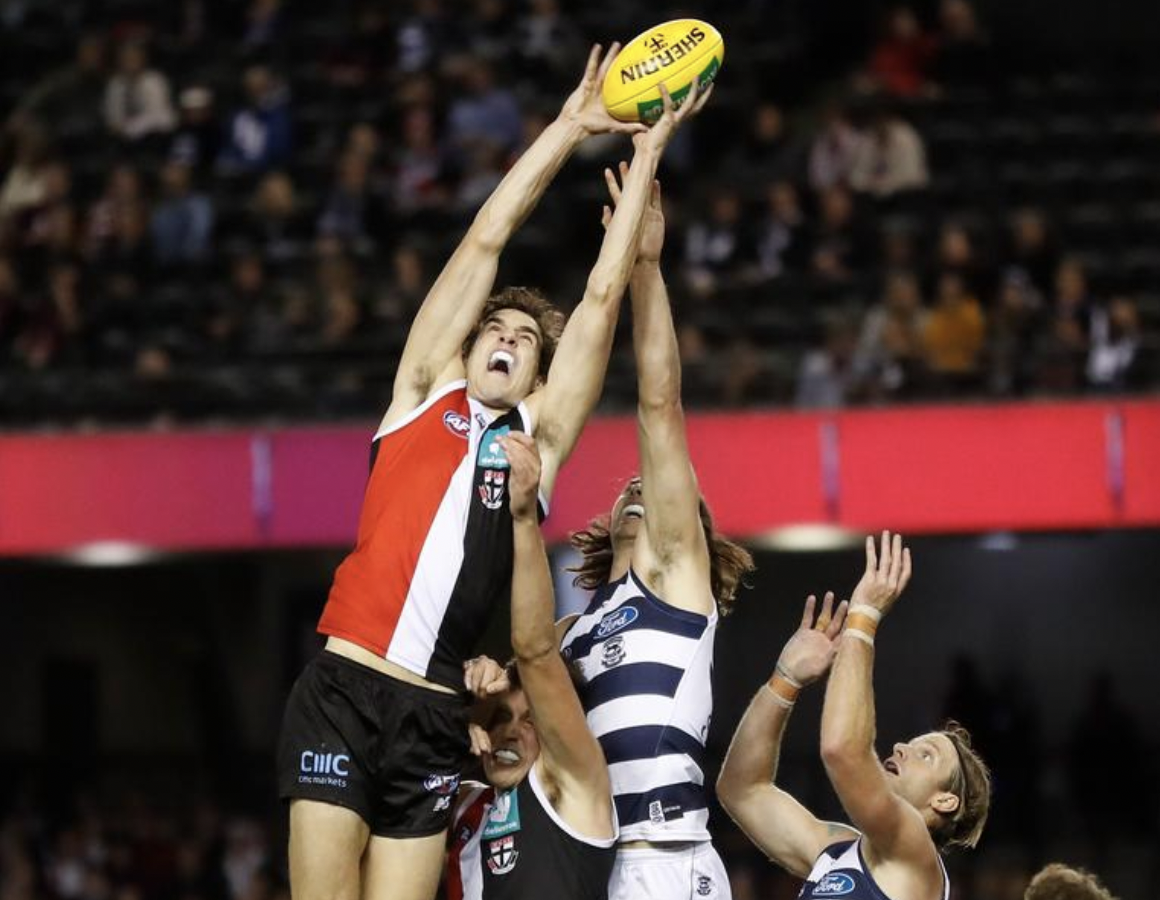If you are a footy fan, you might have heard about Max King’s shoulder injury just before Christmas last year. As a result of the injury, Max had to undergo reconstruction surgery and will miss the start of the AFL season in 2023.
You might have seen quite a few footy players getting a shoulder injury every now and then, but did you know that this kind of injury has a rate of 1-2 per club per year? And the chance for a recurrence of the injury can range from 9%- 15% and even as high as 54%. (Saw et al., 2018)
UPG Physiotherapist Jason analyses Max King's shoulder injury and takes a deeper view of what causes the injury, what are the treatment options and how long it takes to recover.
What is this shoulder injury?
What Max suffered from was an anterior dislocation of his shoulder joint, which means his shoulder “popped” forwards out of the joint. Doctors at the emergency room can “pop” it back in place, but the player may suffer from ongoing joint instability which may damage more structures in the shoulder. Often these other structures then require surgical intervention.
How does this shoulder injury happen?
The most common way to dislocate a shoulder in AFL is from a contested overhead mark. This movement requires the athlete to have their arm fully elevated and rotated which is the most vulnerable position for dislocation.
Photo from Getty Images
What is damaged in the shoulder and why is surgery needed?
The shoulder is a ball and socket joint; it gives us extreme mobility and movement but lacks structural stability from the bony structures. The main form of stability and support is from the labrum (cartilage) and the active structures (ligaments and muscle tendons).
The labrum provides support by deepening the contact surface of the ball in the socket. Whereas the ligaments and muscle tendons provide dynamic support by covering around the joint.
When the shoulder is dislocated forwards, it stretches the active structures and in up to 40% of cases, causes tears and fractures of the labrum and/or glenoid fossa which requires surgical intervention to repair.
What does the surgery involve and what options do I have?
There 2 different approaches to repair the torn cartilage:
Bankart Repair where the labral fragment is sutured back (Collin et al., 2017)
Latarjet Procedure where this approach repairs the labral tear and adds stability by transferring a piece of bone (coracoid) to the front of your glenoid - socket (Sydney Shoulder Unit).
Max has undergone the Latarjet procedure and he was expected to return to AFL about 8 months after surgery.
So which one should you be considering? Let’s review the risks and benefits of both!
Bankart Repair
Pros:
Small incision site (key-hole/ arthroscopic surgery)
Minimal risk of complications, less than 4%
Reduce soft tissue damage
Faster recovery of strength
Faster return to sport time, average of 6.8 months
Cons:
Higher shoulder instability recurrence rate, 20.2%
Higher re-dislocation rate, 15%
Latarjet Procedure
Pros:
It provides more passive stability from the extra bone (coracoid bone) and biceps tendons
Lower risk of instability recurrence rate, 14.8%
Lower risk of redislocation rate, 2.7%
Cons:
Higher risk of complications like nerve injuries and non-union (failed bone healing) at the coracoid bone graft, 10.6%
Return to sports time usually 1-2 months longer than Bankart repair
(Rollick et al, 2017)(Perret et al, 2021)
Bankart repair is the more preferred option in the general population because it results in no change to the normal structure of the shoulder and with proactive Physio led rehabilitation, the recurrence rate of dislocation rate can be reduced to as low as 5% (Drummond Jr et al, 2021)
The recovery and rehabilitation period for this injury could be a long one, however there is a recent study looking into a criteria-based approach to clear patients back into sports. This study proposes some targets or milestones the patient needs to reach before returning to contact sports such as:
rotator cuff strength (isokinetic and isometric)
rotator cuff endurance (external rotation endurance test)
closed kinetic chain upper extremity stability test (CKC-UEST)
unilateral seated shotput (USS) test
To be cleared by the physio to return to sport, the person must reach a score of >90% strength compared to the unaffected extremity. If this isn’t reached, the patient must continue rehab exercises for 4 to 6 more weeks. Using these criteria has been shown to reduce shoulder instability rate to 5%.
References
Main Photo - (Scott Barbour/AAP PHOTOS)
Abrams R, Akbarnia H. Shoulder Dislocations Overview. [Updated 2020 Jan 28]. In: StatPearls [Internet]. Treasure Island (FL): StatPearls Publishing; 2020 Jan-.
Castagna A, Markopoulos N, Conti M, Delle Rose G, Papadakou E, Garofalo R (2010). Arthroscopic Bankart suture-anchor repair: radiological and clinical outcome at minimum 10 years of follow-up. Am J Sports Med.
Collin, Philippe & Lädermann, Alexandre. (2017). Dynamic Anterior Stabilization Using the Long Head of the Biceps for Anteroinferior Glenohumeral Instability. Arthroscopy Techniques
Driscoll MD, Burns JP, and Snyder SJ (2015). Arthroscopic transosseous bony bankart repair. Arthroscopy Techniques.
Drummond Jr M, Popchak A, Kevin W & Gillian K (2021). Criteria-based return-to-spor testing is associated with lower recurrence rates following arthroscopic Bankart repairs.
Journal of Shoulder and Elbow Surgery. Latarjet procedure: Shoulder surgery. Sydney Shoulder Unit. (2021, December 30). Retrieved March 16, 2023, from https://sydneyshoulderunit.com.au/procedures/latarjet-procedure/
Saw, R., Finch, C. F., Samra, D., Baquie, P., Cardoso, T., Hope, D., & Orchard, J. W. (2018). Injuries in Australian Rules Football: An Overview of Injury Rates, Patterns, and Mechanisms Across All Levels of Play. Sports health.



